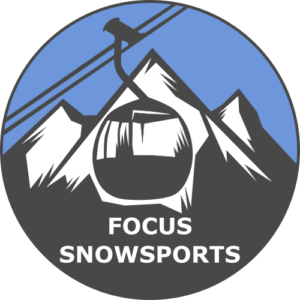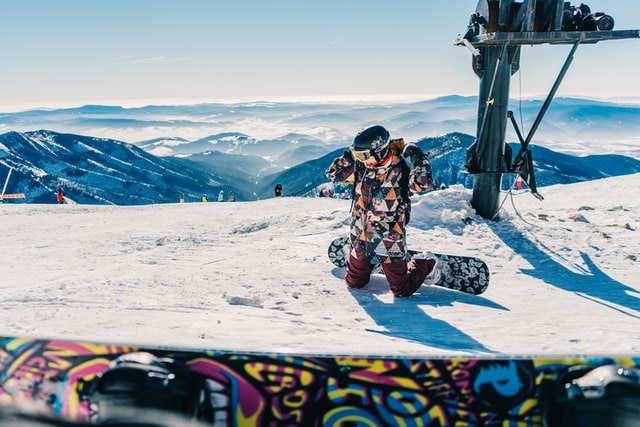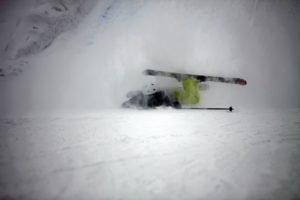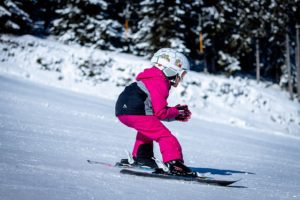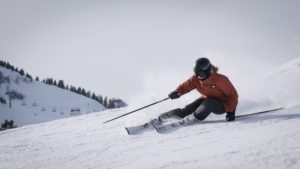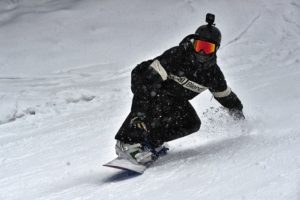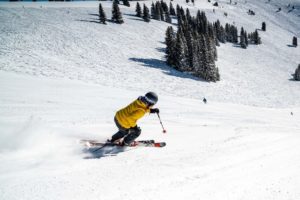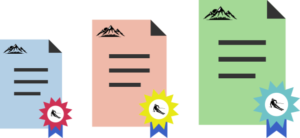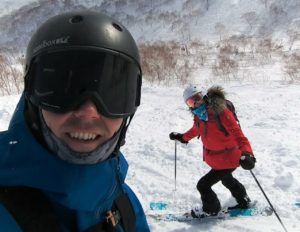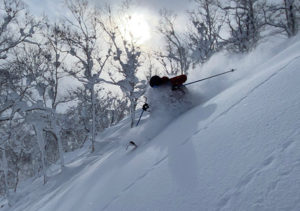“Bend your knees”, “Just copy me”, “Go that way”. At some point you’ve probably wondered, how do you actually teach snowboarding? You want your friend, family member or guest to have a great time and feel the rush of gliding down a pristine slope like you do, but first they have to master the basics, and of course not break a leg. Let’s look at how a professional snowboard instructor would teach snowboarding.
This won’t be a full step by step guide as it’s quite difficult to translate written instructions into actions for snowboarding, that’s great for Ikea furniture, but people are much more complex and unique. This post will help you understand how a snowboard lesson is taught well.
The outcome of someone learning to snowboard should be a great experience that makes them want to come back for more. If you’re teaching them, it’s your responsibility to set them up for success so you can pass on your love for snowsports. Let’s take a look at how you can achieve this.
Am I Good Enough to be a Snowboard Instructor?
Managing Expectations

Firstly, it’s good to get an idea of your guest’s background. Are they athletic? Do they have any injuries? What about psychological, are they confident or nervous? Getting a sense of who your guest is and how they might handle a very unfamiliar environment is important. Not only to manage their expectations of learning snowboarding, but for your own.
This is where experienced instructors have an advantage when they teach snowboarding. If you approach the guest with little to no preconceptions, you’re more open to working to their level. A common mistake is to assume the person that you’re teaching to snowboard will learn quickly and understand things just as you do. This is especially true if you know the person. If you have this mindset, you’ll quickly become frustrated, and it will show. This will put more pressure on your student and leads to their frustration too.
When you teach snowboarding lessons, removing your own bias and expectations is key to a success. It really comes down to this, is your guest safe and enjoying their experience? If so, you’re providing a great lesson already, if they’re learning something then that’s a bonus. It’s easy to get caught up in wanting your guest to learn as much as possible, as fast as possible. But, it’s better to have a guest who takes much longer and enjoys the experience, than someone learning faster, but feeling pressured and not wanting to do it again.
Top 5 Qualities of a Great Snowboard Instructor
How People Successfully Learn to Snowboard

“Turn, just like this”. I couldn’t even tell you how many times I’ve heard this on a beginner slope. Usually said by a keen partner desperately wanting their significant other to ride just like they do. You can almost feel the frustration building in either or both people involved. Let’s look at how people learn to snowboard, and why you need to think about different ways to present information to your learner.
People learn by watching, hearing/reading or trying, or some combination of the three. You’re likely to try and teach snowboarding the same way you learn best. It’s natural for us to teach similar to our own personal method of learning. Your learner might be different though. You’ll need to hit all three methods of learning, look for what works best for them, and then focus on that.
So, when it comes to teaching a beginner snowboarder for example. You’ll want to give a clear explanation, show the movements in a simple way and then have them try it out. From there you can offer additional and specific details such as, “try adding more weight on your left leg to keep even pressure”. You could demonstrate one aspect of the task such as showing them how to correct a weight imbalance. You can also ask your beginner rider to try adding more weight to the wrong leg to see what happens and why we want to change that. If the beginner gets a positive result from one of these, you’ve succeeded in teaching them something and they will love snowboarding so much more.
Is My Student Ready to Try a New Slope?
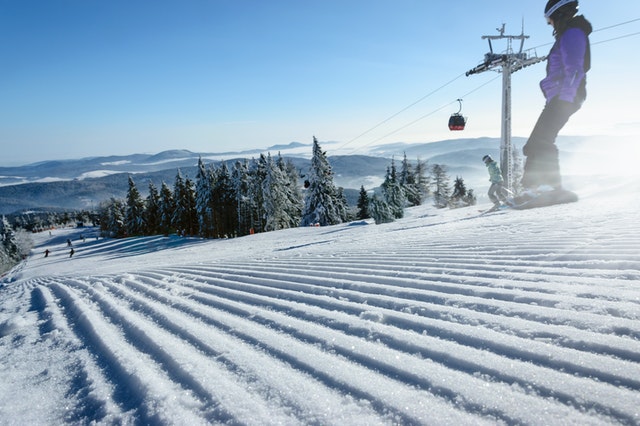
Another important thing you should consider is your learner’s progression. Let’s assume you’re been teaching someone to snowboard for a little while and they’re having a great time. They’re picking up what you’re teaching and you’re considering what to do with them next. The first thought that you might have is to try a new slope, maybe something more challenging.
The decision to move on with your beginner snowboarder is a really important one that should be done only when you can confidently answer questions like these. Am I absolutely sure they can handle the new challenge? Have we exhausted all skill options on the current slope? Do they actually want to try a new slope?
The last question is so important, yet often overlooked, especially if you’re teaching a friend or family member. This is where experienced snowboard instructors can detach themselves from the learning process. It should never be about where you want to go or if you’re getting bored on the current slope. Your learner might be absolutely smashing it with everything you’ve taught them. But they might be happier refining what they’ve learnt right where they are before trying something steeper.
When they aren’t ready for a new slope
If your learner snowboarder is happy to stay where they are, consider new exercises that will challenge them more. If you’re already done quite a lot with them and don’t want to overload them, work on the same skills but try to gradually increase the speed. This will prepare them for a steep slope as they will already be used to the sensation of faster speeds. Speeding up on a comfortable slope is a huge confidence booster and will lead to success for you and your beginner. If you want to teach snowboarding with the best outcome, truly mastering their current slope before moving on is key to this.
When They Aren’t Ready for a New Slope
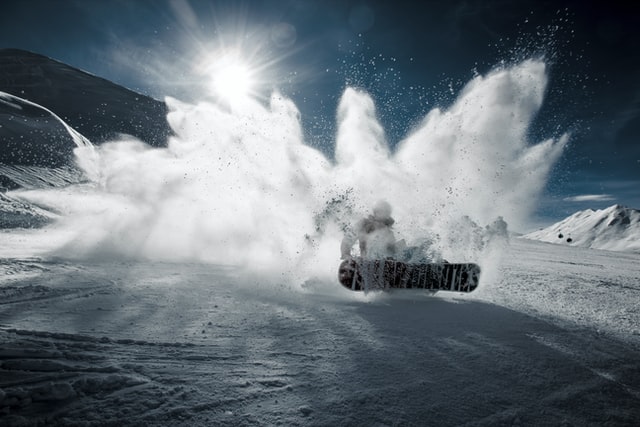
If your learner snowboarder is completely ready for the next slope, make sure you know it well. You might have rode the slope a few times already, but don’t forget that what looks easy to you might be terrifying for a beginner. Ensuring the slope is manageable the whole way down is very important. There may be some slightly steeper sections on the hill that you wouldn’t normally notice when riding yourself. Try to see the slope from the eyes of a beginner.
If you’re confident they can handle the more difficult parts to the new slope, try the following tactics. Make a positive first experience your number on priority. Don’t dwell on the steeper parts. Instead try to keep your learner safely moving and following you as the slope steepens. If you stop just before the slope drops away, your beginner will start to focus on it and it will look much steeper to them. So use those flatter areas if you need to stop. Be sure to congratulate your learner on their new accomplishment and keep their excitement levels high.
How to Stand Out as a Snowsports Instructor
Things to Remember When You Teach Snowboarding
To successfully teach someone to snowboard, remember the following. It’s all about their experience. No matter if you’re a snowboard instructor or simply their friend, partner or family member. Be realistic with what they can achieve, try to understand how they learn best and let them progress at a comfortable pace.
Teaching snowboarding can be one of the best experiences for both you and the learner, but it is tricky. This is a sport that you love and you’ll want them to excel and love it too! Using the information above, you should be able to create a truly memorable time in the snow, incite passion for snow sports and feel accomplished by giving a great lesson.
